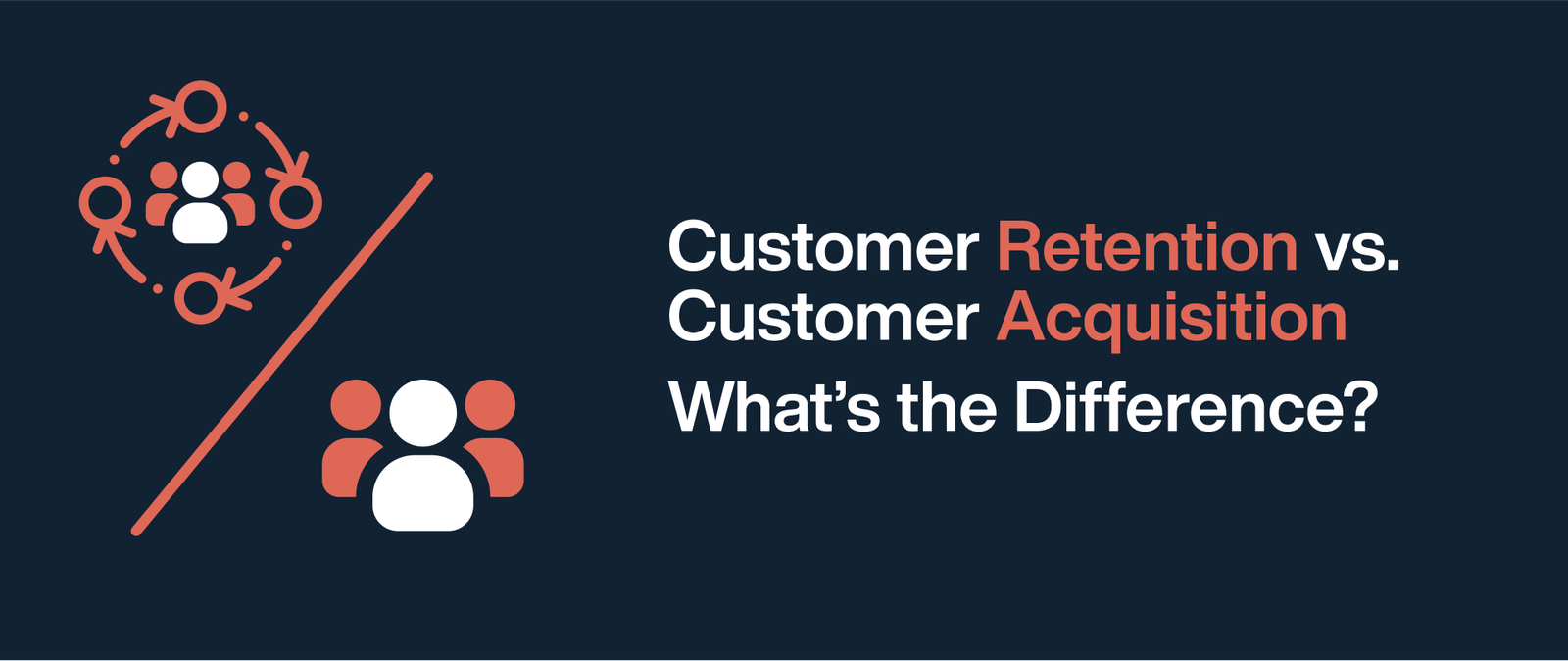Customer Retention vs. Customer Acquisition: What’s the Difference?

When it comes to growing an e-commerce business, two strategies usually take center stage customer acquisition and customer retention. Both are important, but they serve different purposes and deliver different kinds of value. Understanding how these two approaches compare helps brands decide where to invest time, energy, and budget.
In this guide, we’ll break down what acquisition and retention mean, how they differ, why both matter, and which one deserves more focus in today’s competitive market.
What is Customer Acquisition?
Customer acquisition is the process of attracting and converting new customers to your business. It includes everything from marketing campaigns to sales funnels designed to capture the attention of people who have never purchased from you before.
For e-commerce brands, customer acquisition might look like:
- Running paid ads on Facebook, Instagram, or Google
- Offering first-purchase discounts or free shipping
- Partnering with influencers to expand reach
- Optimizing product pages for search engines
The goal is simple: bring new people in the door.
Why Acquisition Matters
Without acquisition, no business can grow. Startups especially depend heavily on acquiring new customers to build awareness and prove demand. However, acquisition comes at a cost often referred to as CAC (Customer Acquisition Cost).
With ad costs rising and competition increasing, acquisition can get expensive quickly. That’s why relying only on acquisition is often not sustainable in the long run.
What is Customer Retention?
Customer retention focuses on keeping the customers you already have and encouraging them to continue purchasing from your brand. Retention strategies build loyalty, increase repeat orders, and maximize the value of each customer relationship.
Examples of retention in e-commerce include:
- Loyalty programs that reward repeat purchases
- Personalized email and SMS campaigns
- Subscription models that deliver convenience
- Excellent customer service and post-purchase support
- Surprise-and-delight tactics like birthday discounts or VIP offers
Instead of chasing new buyers, retention emphasizes nurturing existing customers.
Why Retention Matters
Retention directly impacts Customer Lifetime Value (CLV), which measures how much revenue a customer brings to your brand over time. Studies show it costs 5–7 times more to acquire a new customer than to retain an existing one. Even small improvements in retention can dramatically improve profitability because returning customers spend more and often become advocates for your brand.
Customer Retention vs. Customer Acquisition: Key Differences
|
|
In simple terms: acquisition brings customers in, retention keeps them coming back.
Why the Balance Between the Two Matters
Neither retention nor acquisition should be ignored. A brand that only focuses on retention may eventually run out of new buyers, while a brand that only focuses on acquisition will struggle to stay profitable.
The most successful e-commerce businesses strike a balance:
- Early-stage brands invest heavily in acquisition to grow their customer base.
- Scaling brands lean more on retention to increase profitability and maximize the value of existing buyers.
- Established brands often combine both, but retention typically drives the highest ROI.
For example, a DTC skincare brand might run Instagram ads (acquisition) to capture new buyers, while also setting up post-purchase email flows (retention) that educate customers on how to use the products and encourage reorders.
Retention as the Long-Term Growth Driver
While both matter, research shows that retention often drives more sustainable growth than acquisition. Here’s why:
- Lower Costs: You spend less to sell to someone who already knows and trusts your brand.
- Higher CLV: Retained customers make repeat purchases, increasing average order value and lifetime revenue.
- Brand Advocacy: Loyal customers often share your brand with friends, creating organic acquisition at no cost.
- Stronger Margins: With fewer discounts and less ad spend, retention usually means healthier profits.
In fact, improving your retention rate by just 5% can increase profits by 25–95%.
Practical Examples: Acquisition vs Retention
- Acquisition example: A fashion brand launches a TikTok campaign with influencer collaborations to attract first-time buyers. The campaign generates awareness and brings in 1,000 new customers.
- Retention example: The same brand creates a loyalty program and sets up automated email flows. As a result, 300 of those 1,000 customers make repeat purchases within the first three months, doubling their lifetime value.
This shows that while acquisition is crucial to bring customers in, retention multiplies the return on that effort.
How to Decide Where to Focus
Ask yourself these questions:
- Do we have a steady flow of new customers, but low repeat purchase rates? If so, it may be time to put more energy into retention.
- Are we new and still struggling to build awareness? In that case, acquisition should be the first priority.
- Is our customer acquisition cost (CAC) rising while margins are shrinking? That’s a clear sign retention can help improve profitability.
Most brands benefit from adopting a retention-first mindset while still continuing to invest in acquisition. This ensures that every dollar spent on ads delivers long-term value.
Conclusion
Customer acquisition and customer retention are two sides of the same coin. Acquisition helps you grow your audience, while retention ensures that growth translates into lasting profitability. For e-commerce brands especially, the smartest approach is to acquire strategically while building strong retention systems that keep customers coming back.
Brands that master retention not only increase revenue but also build deeper customer relationships that fuel sustainable growth.